Connect the washing machine to the well
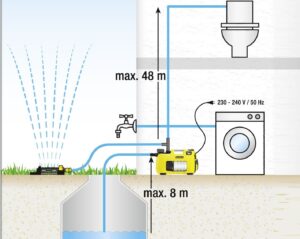 Today, automatic washing machines are installed both in city apartments and in private houses without water supply and sewerage. It is possible to connect a washing machine to a well, and use the equipment without any problems even in the country. We will figure out how to organize the water supply to the device, what difficulties you may encounter, what materials and tools will be required in the process.
Today, automatic washing machines are installed both in city apartments and in private houses without water supply and sewerage. It is possible to connect a washing machine to a well, and use the equipment without any problems even in the country. We will figure out how to organize the water supply to the device, what difficulties you may encounter, what materials and tools will be required in the process.
We collect the necessary materials and tools
If your home does not have running water and sewerage, this is not a reason to refuse to install a modern washing machine. There are several ways to organize the water supply to the machine. For example, connect it to a well, borehole, provide a reservoir from which the equipment will be filled.
Quite often, homeowners choose the method of connecting the SMA to the well. In this case, the equipment will work no worse than from a centralized water supply. What materials and tools will be needed in the process?
To connect the washing machine to the well, you will need a submersible pumping station.
If there is no well on your site yet, you will need to drill one. This is done with the involvement of specialists. They have equipment at their disposal that easily “breaks through” the soil to the aquifer. Further connection can be done on your own; during the work you will need:
- water station;
- pressure switch;
- hydraulic accumulator;
- a special filter (necessary to purify groundwater from impurities);
- check valve (if it is not provided in the design of the well pump);
- water pipes for supplying water to the machine;
- couplings;
- sheets of expanded polystyrene and sand (for insulating “street” pipes);
- special shut-off valve;
- crimp couplings;
- tee tap.
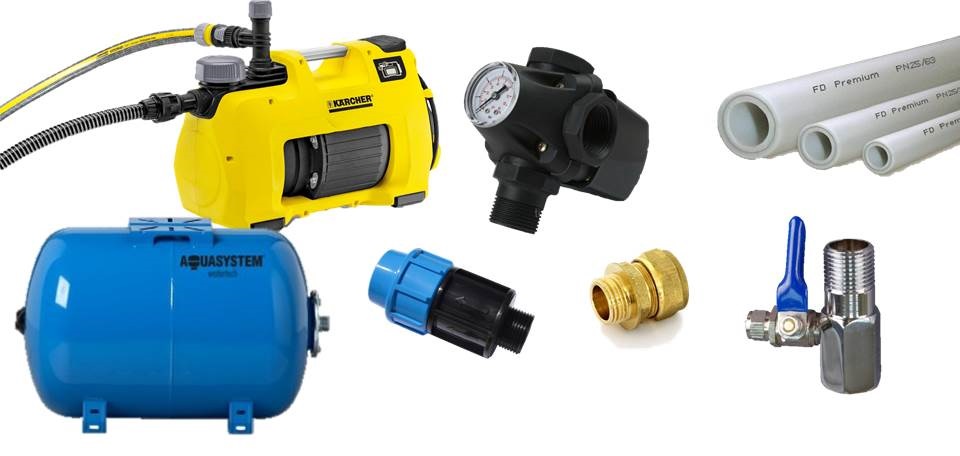
The diameters of pipes and hoses are selected depending on the SMA model. In modern automatic machines, the inlet hose has a 3/4 inch thread. Tee taps are sold in just this size.
As for tools, you need to have on hand a shovel for digging a trench, a drill with a drill bit, a screwdriver, a wrench and an adjustable wrench, bolts, and nuts. You will also need a regular tape measure, a knife, a building level, and sealant.
It is important to decide at the planning stage where the washing machine will be located. The room must be heated so that the water in the washing machine and pipes does not freeze. The floor covering must be hard and well reinforced.
It is also necessary to provide space for the location of drainage communications. This may be a stationary tank where water will be drained. It is better, of course, to organize the drainage directly into a shambo or drain pit.
We mount the machine
Now it’s worth describing in more detail the algorithm for connecting a washing machine to water. The first task that the owner will face is drilling a well. For these purposes, a special team is hired. The cost of the service depends on the depth of the aquifer.
The supply of water from a well helps to service all the plumbing equipment of a private home: sinks, toilets, bathtubs, shower cabins, dishwashers and washing machines.
The chosen method of connecting the washing machine has its disadvantages. Firstly, work can only be carried out in the warm season. In Russia these are the months from May to September. From October to April, it will be simply impossible to drill a well in many Russian regions.
The second disadvantage is the fairly high cost of connection. You will have to pay several hundred dollars for such amenities. A well is a pleasure that not everyone can afford.
When the mine is ready, you need to take care of purchasing a well pump. The choice of pumping stations is now quite large, everything will depend on your budget and the required power of the device.
The power of the pumping station is calculated based on the depth of groundwater.
Further actions will be as follows:
- Attach a check valve to the pump nozzle (if the valve is provided by the PNS design, then there is no need to install it additionally);
- install a special filter to purify the collected groundwater;
- connect the water supply pipe (for some PNS models it is recommended to use rubber hoses rather than pipes, so carefully study the technical data sheet of the device);
- connect the electric cable to the pumping station;
- start installing the cable that will hold the pump at the desired depth;
- carefully connect the cable, electrical cable and pipe together using special clips or fixing clamps;
- immerse the pump in the well (do this very carefully);
- fix the pump at the correct height;
- check how the pumping station works;
- connect the pipes that will lead to the house to the water supply hose.

The pipe through which water will be supplied to the house should pass slightly below the freezing depth of the soil. Therefore, you will have to dig a trench of the required size. It is better to lay the water supply in a straight line - this will make it easier for the pump to pump water.
Additionally, it is recommended to insulate the pipes. This can be done with sheets of polystyrene foam and sand.At the entrance to the house, the water supply is “passed” through the foundation.
To automate the water supply, a hydraulic accumulator with a volume of 50 to 100 liters and a pressure switch are usually installed.
The machine is connected to the water supply through an inlet hose. It is better to provide a shut-off valve in front of it, which, if necessary, can shut off the water supply to the system.
If a private house has had a well for a long time and a water supply has been organized, then connecting the washing machine to the communications will be very simple. It is enough to install a tee tap in front of the bathroom faucet or cut it directly into the pipe. After this, the CMA inlet hose is connected to the outlet.
Where to put soapy water?
Having connected the washing machine to the water supply, you need to address the issue of organizing the drainage. Soapy water with powder granules is toxic to the soil, so simply “throwing” it into the ground is not recommended. It is necessary to provide a drainage hole, concrete it and direct the flow there.
If the house already has a Shambo, the machine is connected to the general sewer system. The drain hose of the washing machine is connected to the drain pipe and cuts into it through a special clamp. After this, you can start the first wash.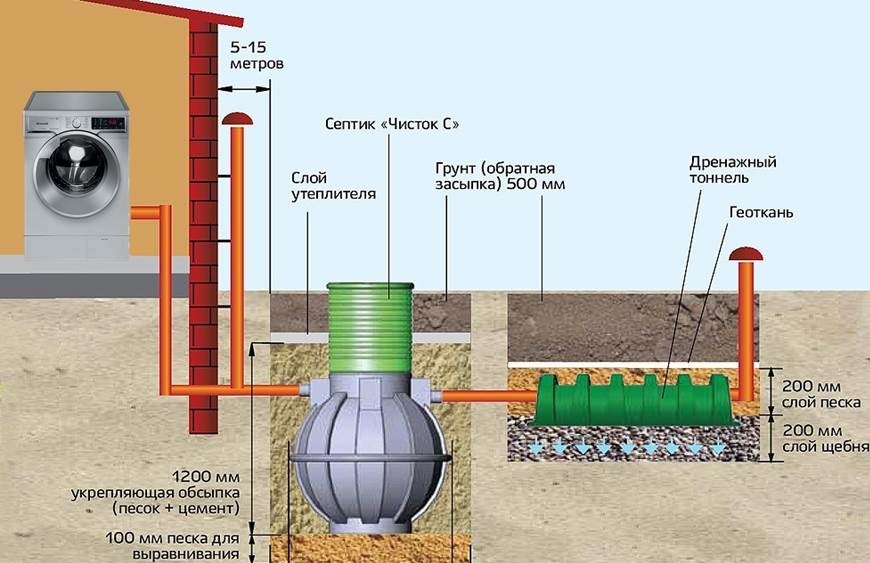
First, a test wash is started without any laundry in the drum. For this:
- turn on the machine;
- press the network button on the control panel;
- use the programmer to select one of the short modes;
- start the cycle.
Next, observe the operation of the machine. The washer should begin to spin the drum and begin drawing water. Make sure there are no leaks where the hoses are connected. If the test cycle goes as usual, you can start a full wash.
Interesting:
Reader comments
- Share your opinion - leave a comment
Categories
Washing machine repair


For buyers

For users

Dishwasher



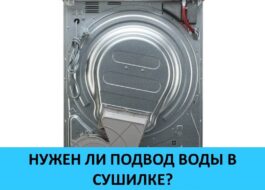
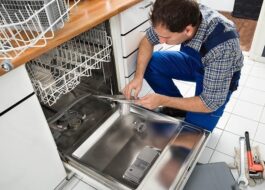












Add a comment